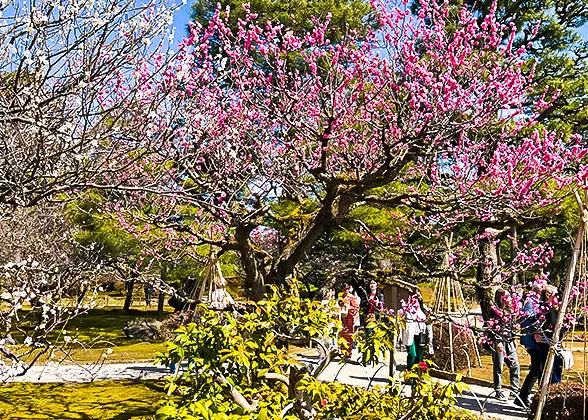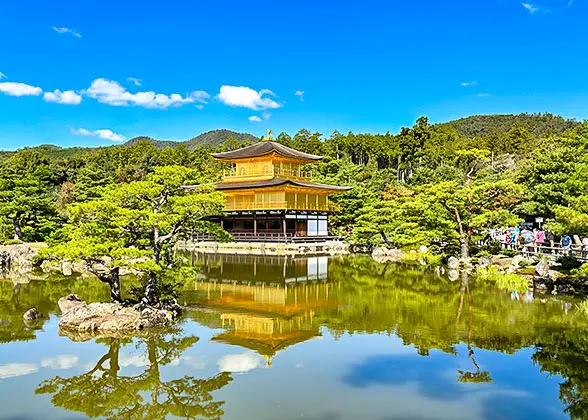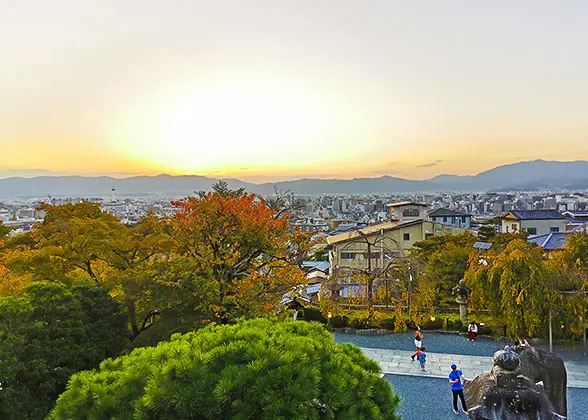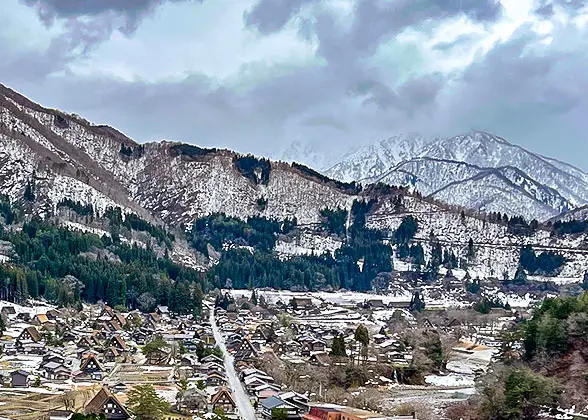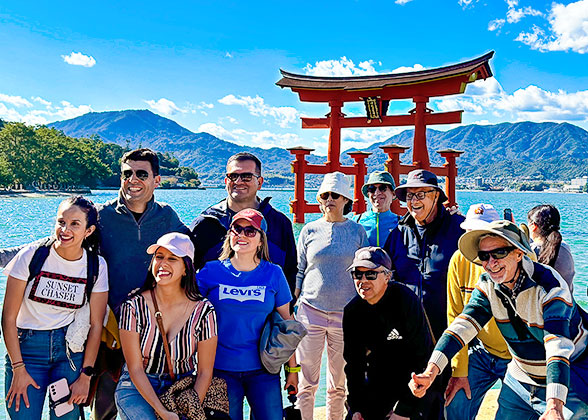Best Time to Visit Japan
Peak season – March to Early May & October to November
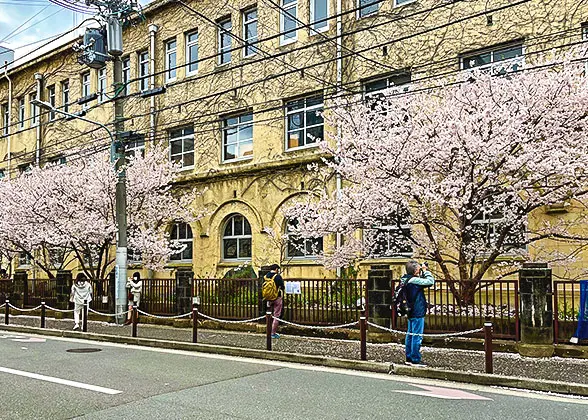 |
| Cherry Blossoms in Spring Peak Season |
Japan sees two peak seasons in spring and autumn, respectively. From mid-March to April, the stunning cherry blossom appeal to a great number of tourists. Besides, the Golden Week from late April to early May in Japan, makes the peak season continue till early May. October to November is also a peak season in Japan, because of comfortable weather as well as the attractive fall leaves here and there.
There are superb scenery and cozy weather during peak season, however, it is quite crowded with large stream of visitors and the expense would be higher as the price goes up.
Slack season – Mid-May to June, September & mid-December to February
After Golden Week, the slack season begins since mid-May; then the rainy season comes in June, making the period unsuitable for travelling. September is also an off season in Japan, as schools open, summer heat has not been over yet, and the maple viewing season has not come. In addition, cold winter months from mid-December to February is a slack season in Japan, too. However, if you would like a Hokkaido tour in northern Japan, winter is a great time for sightseeing there.
Less people will go for a travel in slack season, so the visitors would not teeter in congested crowds. Meanwhile, the price goes down, making your Japan tour leisurely and doesn’t cost much.
Shoulder Season – July to August & Late November to mid-December
In the first half of March, the winter cold remains and the cherry blossom season doesn’t start. Thus, the short period is considered as a shoulder season in Japan. July to August is the shoulder season as well, when school is off during these summer months, but it is the hottest and wettest time in the year in Japan. Even so, the muggy months are the high season to enjoy beach fun in Okinawa, the southernmost of Japan. For late-November to mid-December, although there remains a chance to appreciate red leaves, the bitter winter cold comes soon.
Travel to Japan in the Four Seasons
Spring – March to May
Spring in Japan gets warmer, but with big temperature difference between daytime and nighttime. It is pleasant for sightseeing in general. ![]() Average Temperature: 6-14℃ (42.8-57.2℉)
Average Temperature: 6-14℃ (42.8-57.2℉)![]() Clothes to Wear: thin sweater plus a trench coat or jacket, jeans, knitwear, hoodie, sneakers
Clothes to Wear: thin sweater plus a trench coat or jacket, jeans, knitwear, hoodie, sneakers
Travel Recommendation: Cherry blossom is the highlight in spring, when there are also colorful activities in Japan. Ueno Onshi Park, Shinjuku Gyoen, Meguro-kawa Riverbanks in Tokyo, Nijo Castle and Arashiyama in Kyoto, Japan Mint in Osaka, etc. are all alluring spots for appreciating cherry blossoms. Wisteria, azaleas, and more spring flowers are charming, too. It’s also interesting to experience traditions on Girls’ Day, Setsubun custom, Shuni-e Ceremony at Nigatsu-do Hall of Todai-ji Temple in Nara, Sanja Matsuri at Asakusa Shrine in Tokyo, etc.
|
|
Summer – June to August
Japan’s summer is sweltering and humid. The rainy season falls in mid-late June and July, then it becomes quite sunny. There might be typhoon attacks in late August, but the probability is not high.![]() Average Temperature: 20-28℃ (68-82.4℉)
Average Temperature: 20-28℃ (68-82.4℉)![]() Clothes to Wear: T-shirt, sweatshirt, shorts, dress, skirt, sandals, sunhat, sunglasses
Clothes to Wear: T-shirt, sweatshirt, shorts, dress, skirt, sandals, sunhat, sunglasses
Travel Recommendation: The most popular summer activity in Japan may be water sports, including canoeing, surfing, and diving. Okinawa becomes a hot destination for such sports, as it provides stunning beaches. Also, Hokkaido is a cool summer resort and tourists can indulge in purple waves of lavender fields in Furano. Otherwise, summer festival with firework show is also a must-see in Japan. Nagaoka Fireworks Festival, Shinmei Fireworks Festival in Yamanashi, Sumida River Fireworks in Kyoto, etc. are the grandest shows in Japan. The torrents of Tenjin Matsuri in Osaka and Gion Matsuri in Kyoto also offer great opportunity to experience Japanese culture in summer.
Autumn – September to November
Summer heat fades gradually, and it becomes cool in autumn. September sees a high probability of typhoons, and the typhoon season perhaps lasts to early October.![]() Average Temperature: 18-26℃ (64.4-78.8℉)
Average Temperature: 18-26℃ (64.4-78.8℉)![]() Clothes to Wear: shirt, hoodie, thin jacket, cardigan, jeans, sweatpants, casual shoes
Clothes to Wear: shirt, hoodie, thin jacket, cardigan, jeans, sweatpants, casual shoes
Travel Recommendation: Autumn is popular in Japan for red foliage viewing. Lake Kawaguchi under Mt. Fuji, Kiyomizu-dera Temple in Kyoto, Rikugien Garden in Tokyo, etc. are full of tourists to see the autumn scenery in this season. Apart from well-known red maples, golden gingko leaves, elegant chrysanthemums, red spider lily, cosmos, and more are attractive likewise. Kyoto’s Jidai Matsuri (Festival of the Ages), Nagasaki’s Kunchi Festival, Saga International Balloon Fiesta, and more autumn celebrations make Japan an absorbing autumn destination.
|
|
Winter – December to February
Japan has frigid winter, which is relatively dry in the year. It slightly snows in most regions; but in Hokkaido, snow could be heavy. It doesn’t snow in subtropical Okinawa.![]() Average Temperature: 3-12℃ (37.4-53.6℉)
Average Temperature: 3-12℃ (37.4-53.6℉)![]() Clothes to Wear: sweater, wool overcoat, downcoat, padded pants, scarf, gloves, boots
Clothes to Wear: sweater, wool overcoat, downcoat, padded pants, scarf, gloves, boots
Travel Recommendation: Japan’s winter is great for skiing and hot spring bath. Mountainous areas like Nagano becomes busy for snow sports, while Hakone, Kusatsu, Beppu, etc. are famous onsen resorts. In the winter paradise Hokkaido, Sapporo Snow Festival, with splendid snow and ice sculptures, is perhaps the grandest winter carnival in Japan. Hokkaido is also sought-after for many ski resorts, where visitors could enjoy skiing or snowboarding to the full. Noboribetsu onsen and more winter activities are also fascinating in Hokkaido.
Best Time to Visit Mt. Fuji
April and November are considered as the best time to see Mt. Fuji, with beautiful cherry blossoms and maples, respectively. However, tourists are prone to see snow-capped Mt. Fuji clearly in winter months, when the visibility is the highest in the year. Moreover, the visibility in the morning is better than in the afternoon on sunny days.![]() See more about Japan Weather
See more about Japan Weather
